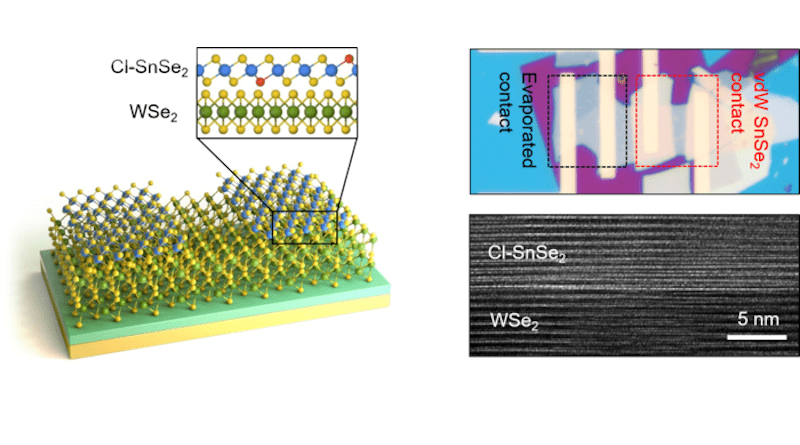New Ultra-Thin Electrode Material: Step Closer To Next-Generation Semiconductors
To realize artificial intelligence systems and autonomous driving systems, which is often seen in movies, in everyday life, processors that function as the brain of computers must be able to process more data. However, silicon-based logic devices, which are essential components of computer processors, have limitations in that processing costs and power consumption increase as miniaturization and integration progress
To overcome these limitations, studies are being conducted on electronic and logic devices based on very thin two-dimensional semiconductors at an atomic layer level. However, it is more difficult to control the electrical properties through doping in two-dimensional semiconductors than in conventional silicon-based semiconductor devices. Thus, it has been technically difficult to implement various logic devices with two-dimensional semiconductors.
The Korea Institute of Science and Technology (KIST; President: Seok-jin Yoon) announced that a joint research team led by Dr. Do Kyung Hwang of the Center for Opto-Electronic Materials and Devices and Professor Kimoon Lee of the Department of Physics at Kunsan National University (President: Jang-ho Lee), has succeeded in implementing two-dimensional semiconductor-based electronic and logic devices, whose electrical properties can be freely controlled by developing a new ultra-thin electrode material (Cl-SnSe2).
The joint research team was able to selectively control the electrical properties of semiconductor electronic devices using Cl-doped tin diselenide (Cl-SnSe2), a two-dimensional electrode material. It was difficult to implement complementary logic circuits with conventional two-dimensional semiconductor devices because they only exhibit the characteristics of either N-type or P-type devices due to the Fermi-level pinning phenomenon.
In contrast, if the electrode material developed by the joint research team is used, it is possible to freely control the characteristics of the N-type and P-type devices by minimizing defects with the semiconductor interface. In other words, a single device performs the functions of both N-type and P-type devices. Hence, there is no need to manufacture the N-type and P-type devices separately. By using this device, the joint research team successfully implemented a high-performance, low-power, complementary logic circuit that can perform different logic operations such as NOR and NAND.
Dr. Hwang said that, “this development will contribute to accelerating the commercialization of next-generation system technologies such as artificial intelligence systems, which have been difficult to use in practical applications due to technical limitations caused by the miniaturization and high integration of conventional silicon semiconductor devices.” He also anticipated that “the developed two-dimensional electrode material is very thin; hence, they exhibit high light transmittance and flexibility. Therefore, they can be used for next-generation flexible and transparent semiconductor devices.”

